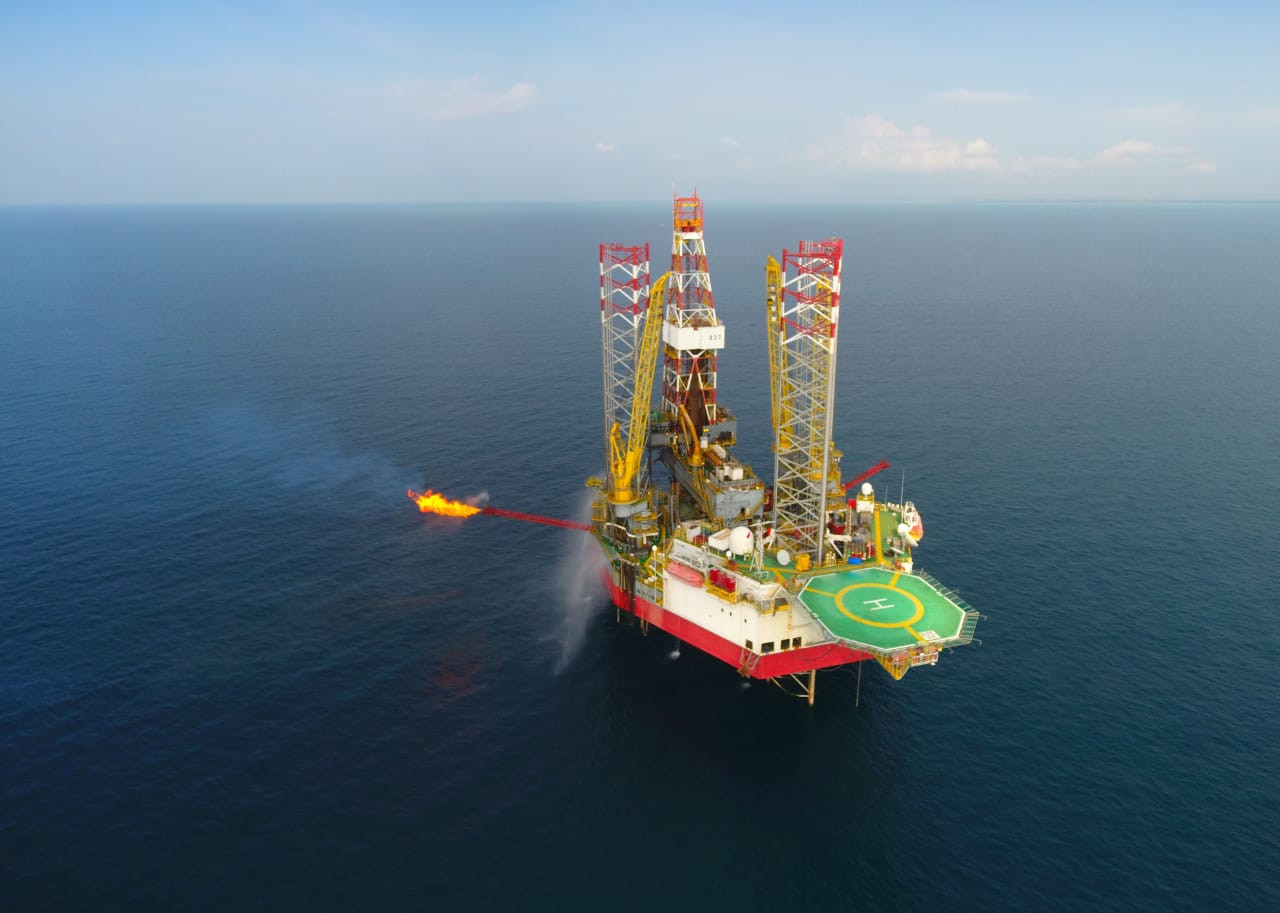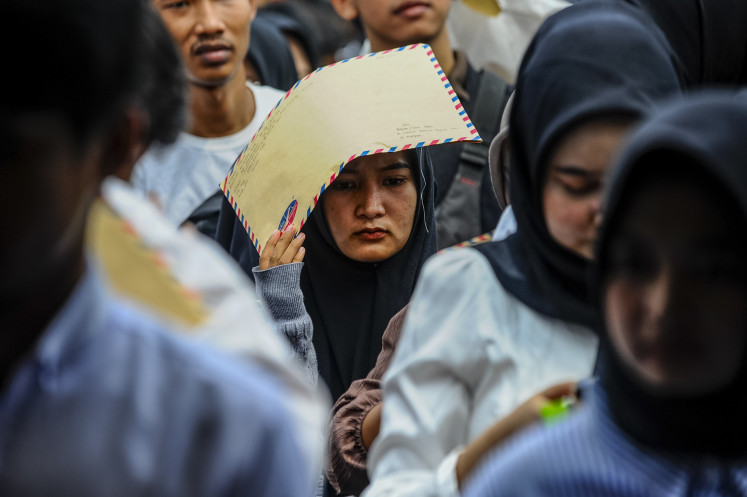Oil, gas sector needs massive reform: SKKMigas
Investment, production failed to meet all government targets as of third quarter.
Change text size
Gift Premium Articles
to Anyone

I
ndonesia has once again missed its oil and gas production targets amid mounting pressure from a more competitive investment climate, signaling an urgent need for aggressive policy reform in the mining sector.
The policy reform, as Upstream Oil and Gas Regulatory Task Force (SKK Migas) hopes, will enable a significant improvement in the industry’s investment climate.
SKK Migas planning deputy Benny Lubiantara said that the looming global recession and ongoing energy transition process had led to a greater need for significant change in how the government attracts investors to Indonesia.
“SKK Migas continues to push oil and gas contractors [KKKS] to massively and aggressively improve their investments and working programs,” he told a press briefing on Monday, without elaborating further.
Investments in oil and gas by the third quarter of this year reached US$7.7 billion. The figure only amounted to about 60 percent of this year’s $13.2 billion target, despite marking the largest upstream investment on average in the last seven years.
SKK Migas head Dwi Soetjipto explained that rising oil prices, which he predicted would be short-lived, would not positively impact investment in the oil and gas industry because more companies were investing in renewable energy while aiming to reduce debt and share dividends.
“The challenge is how [SKK Migas] transforms the oil and gas investment climate in Indonesia,” Dwi said.
Ahmad Zuhdi Dwi Kusuma, an industry and area analyst at state-owned Bank Mandiri, underlined that oil and gas companies tended to take advantage of rising global oil prices to pay off debt, such as Brazil-based Petrobras and United Kingdom-based British Petroleum.
“We have a 1 million barrels of oil per day [bopd] target in 2030, but lifting targets for next year have been lowered from this year’s [target], showing a pessimistic perspective toward the domestic oil and gas industry,” he told The Jakarta Post on Tuesday.
Nonetheless, oil and gas companies struggling to attract investors are “not something new”, according to Moshe Rizal, secretary-general of the Oil and Gas Companies Association (Aspermigas).
Oil prices continue to fluctuate and the energy landscape is evolving. Globally, the sector’s annual stock performance over the last five years has consistently lagged behind the S&P 500, a PricewaterhouseCoopers (PwC) study shows.
“The government has made sizeable positive changes in encouraging more investment in the sector, but stakeholders need to do five times more in this trying time,” he told the Post on Tuesday.
Moshe suggested the government should aggressively market oil and gas projects toward potential investors and accelerate the finalization of the amendment of Law No. 22/2001 on oil and gas.
Read also: Green energy shift risks upstream oil, gas investment: SKK Migas
Indonesia’s oil and gas production in the first half of the year amounted to 1.57 million barrels of oil equivalent per day (boepd), accounting for about 90 percent of the government’s 1.74 million boepd target, according to data from SKK Migas.
The task force also recorded production of 613,000 bopd as of Sept. 30, 86.8 percent of the 703,000 boepd production target, while gas production totaled 5,353 million metric standard cubic feet per day (mmscfd), 92.3 percent of the 5,800 mmscfd target.
Read also: Oil companies look to take advantage of high prices
The government has tried to change the terms and conditions in offering oil and gas working areas to be more attractive to investment.
For oil and gas working areas that are very low risk, the government offers oil and gas profit sharing of 80 percent for the state and 20 percent for KKKS. As for gas, 75 percent goes to the government and 25 percent is for KKKS.
Indonesia's oil production has continued to decline over the past five years from around 1 million boepd in the 1970s, mostly because of its aging wells and a lack of new discoveries. Energy and Mineral Resources Ministry data show that output fell from 831,000 boepd in 2016 to 708,000 boepd in 2020.
A projected decline to 300,000 boepd in 2030 and 119,000 boepd in 2040 will be the equivalent to a respective drop of 58 and 87 percent from the 2020 levels. The National General Energy Plan (RUEN) has forecast a drastic increase in oil and gas consumption over the coming decades that is likely to exacerbate the country’s oil and gas deficit.
Similarly, SKK Migas data also forecast that domestic oil consumption will more than double to 3.97 million boepd in 2050, while natural gas consumption is expected to more than quadruple to 26,000 mmscfd.









